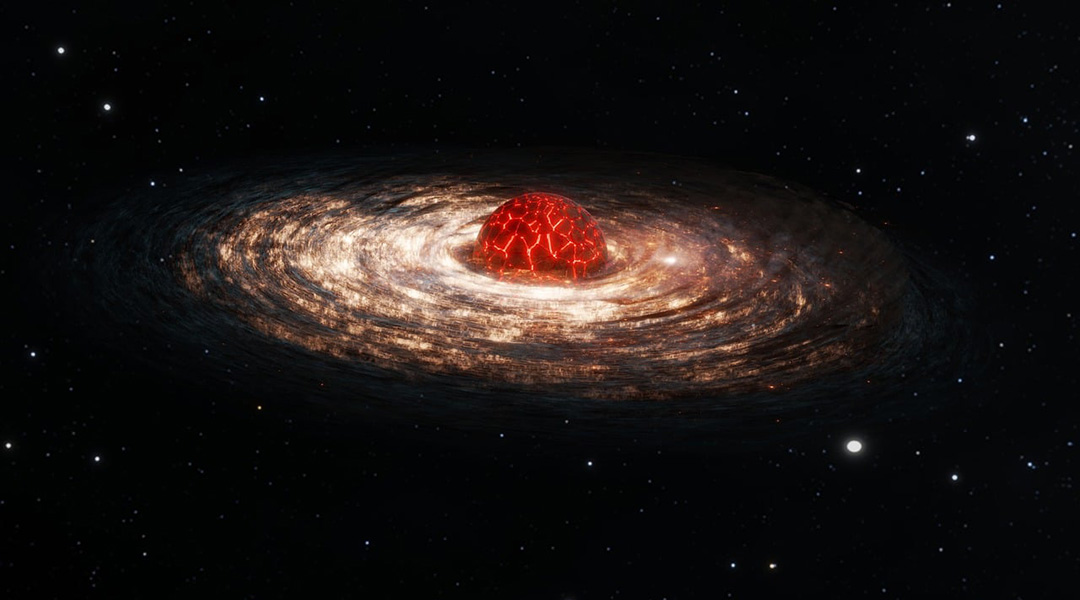Dark matter, the enigmatic entity pervasive throughout the cosmos, has long eluded direct observation, manifesting only through its gravitational influence on more familiar celestial bodies.
Although dark matter is about five times more abundant in space than ordinary matter, its composition and properties remain largely unknown, other than the fact that it doesn’t absorb, emit or reflect light.
This dearth of understanding has spurred scientists to explore diverse hypotheses, seeking properties amenable to comparison with astronomical observations, thus potentially validating or refuting current theories.
Now, a recent theoretical study suggests a compelling possibility: dark matter may gather into massive stars that generate their own electric fields, making them potentially detectable in upcoming experiments.
When ultralight particles come into play
Many candidates have been considered as the constituents of dark matter: hypothetical heavy elementary particles, some unknown type of neutrino, and even black holes formed in the early Universe. However at present, one of the most popular candidates are ultralight particles, whose mass is orders or even dozens of orders of magnitude less than the mass of an electron, which weighs a mere 10-27 (one divided by a thousand trillion trillion) grams.
“This model has gained popularity in recent years due to its great ability to naturally explain many open dark matter problems using very few parameters and in a simpler way than other models, which is desirable in any scientific theory,” Tonatiuh Matos, a theoretical physicist at the Center for Research and Advanced Studies of the National Polytechnic Institute in Mexico, said in an email.“[For example,] it explains the number of satellite galaxies around their host and the density of the galaxies’ centers.”
In a study published in the Journal of Cosmology and Astroparticle Physics, Matos and his colleague Leonardo San.-Hernandez from the same university explored a variation of this theory in which dark matter particles have an analogue of electric charge, which should allow them to interact with each other in the same way that the familiar charged particles, such as the electron and positron, interact with each other.
“We investigate a model where dark matter has a ‘dark’ electric charge, so that there is a dark electromagnetic field that in principle only has effects on dark matter,” San.-Hernandez explained. “This dark electromagnetism is described by a particle called a dark photon. The interesting thing about this dark photon is that it can mix with the common photon of electromagnetism that we know and experience every day.
“The consequence of this mixing between both photons is that the dark matter can interact indirectly with the common photon through the dark photon,” he continued. “The specific case we studied was to consider that the dark photon could acquire mass thanks to the scalar dark matter field through a process very similar to the Higgs mechanism through which some particles that we know acquire mass.”
Studying Proca stars
In their study, the scientists found that dark photons, whose mass, according to their model, is also extremely small, should be able to form compact objects called Proca stars. These are hypothetical stars with masses of millions or even billions that of our Sun.
“The main result […] is that these Proca stars made of dark photons also have an electric field associated with the electromagnetism that we know,” explained Matos. “This electric field may have effects on the particles of the interstellar medium, such as protons and electrons, that are near the Proca star. In this way, we could obtain indirect observations of this type of star in addition to the gravitational effects.”
The scientists say they anticipate that future astronomical observations of dark matter clumps in galaxies could reveal the electric field emanating from Proca stars, providing empirical support for their dark matter theory. Notably, such observations offer the sole means of studying these ultralight particles.
“The existence of hypothetical particles can be tested in particle colliders,” said San.-Hernandez. “Currently, there are experiments in particle colliders for the search of heavy or light particles that are candidates for dark matter, such as dark photons. However, for the ultralight dark matter particles we consider in our work, the only way to verify the existence of stars made of them is through astronomical observations, such as gravitational lensing, gravitational wave events, or possible effects in the interstellar medium due to the mixing of the dark photon with the common photon.”
Presently, observational constraints preclude detection of this electric field. Nonetheless, physicists remain undeterred, committed to advancing theoretical inquiries into Proca stars.
“Future prospects in our work are to continue studying this model of dark matter charged with the dark photon,” Matos concluded. “We would like to investigate if it is possible to use this model to explain other open problems in dark matter and if this charge associated with the dark photon can be an effective way to indirectly detect the ultralight dark matter.”
In essence, while dark matter’s enigmatic nature persists, the tantalizing prospect of Proca stars offers a promising avenue for shedding light on this cosmic mystery.
Reference: Leonardo San.-Hernandez and Tonatiuh Matos, Proca stars with dark photons from spontaneous symmetry breaking of the scalar field dark matter, Journal of Cosmology and Astroparticle Physics (2024). DOI: 10.1088/1475-7516/2024/01/018.
Feature image credit: AdisResic on Pixabay

















